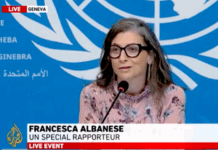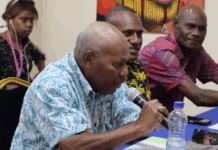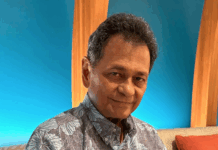
ANALYSIS: By Michael Baker and Nick Wilson of the University of Otago
With some of the toughest border restrictions and a newly-announced NZ$500 million boost to health services, New Zealand is among a small number of countries with a strategy to contain the Covid-19 coronavirus pandemic.
New Zealand is also fortunate in having a brief window of opportunity to refine and roll out an effective response to Covid-19. As at today, there were 52 confirmed cases in New Zealand, all except two related to overseas travel. There is not yet any evidence of community transmission.
This situation could change rapidly as mild cases may not seek medical attention, effectively resulting in “silent transmission”. This process has seen other countries slip into widespread community transmission.
New Zealand is vulnerable until our testing rates and contact tracing capacity increases, potentially to the levels used successfully in South Korea.
To guard against this risk New Zealand should consider a short “pulse” (a few weeks) of intense social distancing, including bringing forward the school holidays and temporary closures of most businesses, social meeting places and public transport.
Doing this now has the potential to slow undetected chains of transmission while containment measures are being ramped up. If containment is sustained, there may be the chance of avoiding the prolonged lock-downs seen in many countries.
New Zealand’s effort to contain Covid-19 will also help protect Pacific Island nations. Samoa in particular has a terrible history of devastating pandemics, notably influenza in 1918 and more recently measles.
Intensive containment can work
Like other countries, New Zealand has relied on advice from the World Health Organisation, whose pandemic plan, originally developed for influenza, focuses on managing spread through successive phases.
But Covid-19 is not influenza. Its longer incubation period (median of five to six days, compared to influenza with one to three days) means we have a better chance of identifying and quarantining contacts, but only if done swiftly and effectively.
By introducing border restrictions and maintaining a focus on stamping out chains of transmission, New Zealand has joined countries like Singapore, Hong Kong and Taiwan that rigorously pursue containment of Covid-19.
The strongest evidence that containment works comes from the remarkable success of China in reversing a large outbreak. Also relevant are examples of smaller Asian jurisdictions.
Planning for the next phase if containment fails
New Zealand needs to continue planning for the scenario where containment fails and we move into widespread community transmission. With Covid-19, it seems impossible to spread demand for treatment sufficiently to manage it through existing health sector capacity.
At this point, we would need additional social distancing measures to suppress the epidemic to ensure New Zealand’s hospital and intensive care capacity are not overwhelmed.
We also need to strengthen other critical components of the national response, notably hospital capacity to treat large numbers of critically ill patients with pneumonia while also ensuring high standards of infection control.
And it is vital to support vulnerable populations to reduce their risk of infection. As with influenza, the risk of Covid-19 infection is particularly concentrated in older people and those with chronic medical conditions. This makes Māori and Pacific peoples particularly vulnerable – as seen in past pandemics.
Support with social distancing, hygiene and home isolation in a way that is consistent with tikanga (Māori customary practices) is particularly important for protecting these groups. Services for community diagnosis and treatment need to be responsive to these populations, as well as those with disabilities and the elderly.
Strategic challenges ahead
Countries have consistently underestimated the Covid-19 pandemic in terms of its global spread and intensity. They now seem to be diverging markedly in their strategic responses.
New Zealand is among those countries and territories committed to containment, but elsewhere, the aim in most high-income countries seems to be to mitigate the effects. Across much of the rest of the world, including the United States, it is unclear whether there is an agreed goal to guide the national response.
The possibility of uncontrolled outbreaks in some regions means countries that pursue containment will face long-term challenges, until a vaccine or treatment is available.
All of these approaches have uncertainty and risks and we will only understand the net societal benefits and costs in hindsight. Certainly in New Zealand, the containment approach appears to have widespread public support, particularly across the health sector.
Many of us are working to monitor and evaluate it so that we can learn how to better manage such threats in the future, some of which may be far worse as biotechnology advances open up new hazards.![]()
Dr Michael Baker is professor of public health at the University of Otago and Dr Nick Wilson is professor of public health at the University of Otago. This article is republished from The Conversation under a Creative Commons license. Read the original article.
- If you have symptoms of the coronavirus, call the NZ Covid-19 Healthline on 0800 358 5453 (+64 9 358 5453 for international SIMs)














































